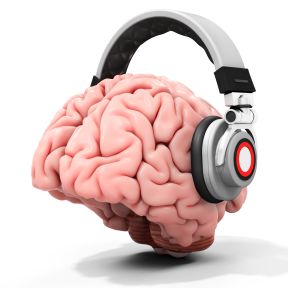
Sensory Processing Disorder
Sensory processing disorder—also known as SPD or sensory integration disorder—is a term describing a collection of challenges that occur when the senses fail to respond properly to the outside world. Though the condition has gained recognition in recent years, it is widely debated and is not currently an official DSM diagnosis.

The five external senses of vision, hearing, touch, taste, and smell—as well as the internal vestibular, interoceptive, and proprioceptive senses—are critical for interacting with the environment. When the sensory receptors in the nervous system malfunction, as they’re theorized to do in SPD, common stimuli like lights, noises, and textures may be perceived as too bright, too loud, or too uncomfortable. Sensory processing issues may also manifest as input-related challenges, resulting in sensory-seeking behaviors compensating for low levels of tactile or proprioceptive input.
Most researchers agree that serious sensory challenges exist, but whether they should be classified as a “disorder” has been contested. SPD is not in the ICD-11 or the DSM—rather, sensory issues are included as a possible symptom of autism. Regardless of formal diagnosis, however, there is treatment available for severe sensory issues.
No. Sensory processing sensitivity is a personality trait that describes how sensitive someone is to physical sensations or emotional input. Those high in the trait are known as highly sensitive people, or HSPs. Sensory processing disorder, on the other hand, describes a sensory dysfunction in which the senses cannot appropriately process environmental input.
SPD is thought to have a genetic basis. It has also been theorized to be related to prenatal alcohol or drug exposure, early childhood trauma or neglect, or a lack of stimulation early in development.
Children tend to struggle more noticeably with sensory issues than adults do, and many children with SPD do find that their symptoms lessen or even disappear over time. But sensory issues can continue to exist into adulthood—though often to a lesser degree—especially for those with comorbid autism.
He may have sensory processing disorder, the most common form of which is over-responsivity to sensations. Over-responsive children may feel overwhelmed when experiencing multiple sensations at once, or they may be made extremely upset by unpleasant sensations (like an itchy tag or a loud police siren) that most people would take in stride.

Since sensory mismatches can lead to difficulties at school or work, particularly for children, addressing such challenges may help individuals cope more successfully with day-to-day life. Sensory processing challenges are usually treated with occupational therapy or at-home programs known as “sensory diets.” Though parents and adults can create sensory diets on their own, working with an occupational therapist may result in a more targeted treatment plan; a child who can’t discern tactile sensations, for instance, would likely require a different intervention than a child who finds bright lights to be overstimulating.
Severe sensory processing issues are usually treated with a combination of occupational therapy and a “sensory diet,” which typically consists of at-home activities that supplement OT. Self-help strategies, such as wearing noise-canceling headphones when exposed to loud noises, can provide immediate help to those with sensory challenges.
Sensory diets are treatment plans for sensory issues, usually designed by an occupational therapist. A sensory diet consists of different activities that attempt to address an individual’s unique sensory needs, either with individualized calming methods or by gradually increasing levels of exposure to uncomfortable sensory sensations.
Occupational therapists help children develop or strengthen their sensory regulation skills. They can also help children devise a plan for what they will do if they feel overwhelmed by sensory input or are otherwise placed in a challenging situation at school, at home, or elsewhere.

Sensory issues are only officially recognized in the DSM-5 as a possible symptom of autism, and many children and adults who have sensory integration challenges do also have autism (or ADHD, another condition with ties to sensory challenges). However, many parents and adults argue that SPD can exist as a standalone condition, and continue to advocate for SPD to be recognized by major psychological organizations as a distinct entity.
Although over- or under-sensitivity to physical sensations are not listed as possible symptoms of ADHD in the DSM-5, many children and adults do report that they struggle with “sensory overload” or other related challenges. Just how sensory issues relate to ADHD, however, is still not fully understood.
Not all do, but it may be more common than not. Some studies suggest that up to three-quarters of children with autism struggle significantly with sensory processing challenges.
Parents should minimize exposure to upsetting stimuli when possible, as well as help the child prepare for situations in which they are unavoidable. Occupational therapy should also be explored.














